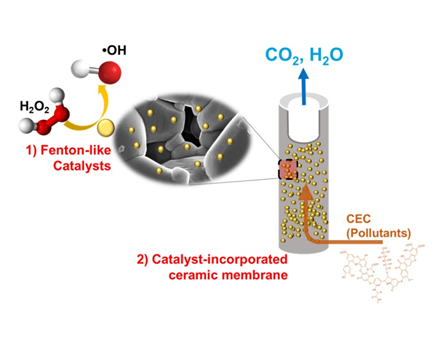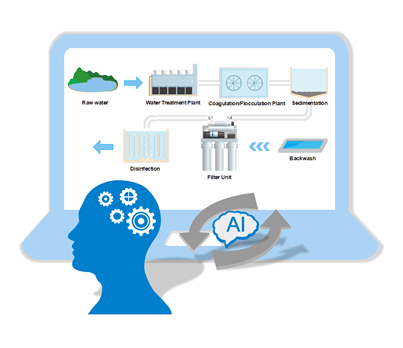SMART CITY
SMART INNOVATION
WEBZINE2022 Vol.05, No.2Featured
Sustainable Water Environment and Energy Technology Laboratory (SWEET Lab)
-
- focuses on how to overcome the economic and technological barriers to current water and renewable energy production processes with the aid of state-of-art analytical and computational tools. Water is essential for our daily life as well as industrial processes. Due to the recent progress on membrane materials and applications, membrane processes become a core technology for water and wastewater treatment, water reuse, seawater desalination, resource recovery, etc. During the application, the deposition and/or formation of unwanted layers on the membrane surface (or membrane fouling) has been regarded as the major obstacle in membrane technology. To understand the membrane fouling phenomena, we have applied various techniques including biofilm analysis, real-time monitoring, and machine learning-based estimation of membrane damage. On the other side, various techniques have been investigated to mitigate and remove membrane fouling such as quorum quenching, catalytic oxidation using ceramic membranes, and electro-oxidation by conductive CNT membranes. Recently, we try to apply membrane technologies for carbon capture and utilization (CCU). By combining the catalytic electrochemical CO2 conversion process with a porous CNT hollow-fiber membrane process, we successfully overcame the diffusive mass-transfer limitation by adapting the convective reactant flow through membrane pores. Besides of above-mentioned research, we are focusing on the application of machine learning and deep learning to water and wastewater treatment plants for energy saving and low carbon footprint.
-
- Selected research results are visualized below.

Membrane biofilm analysis

Catalytic oxidation using ceramic membranes

Improving the rate of methane production

AI for water treatment process

Conductive membrane for electrochemical CO2 reduction



